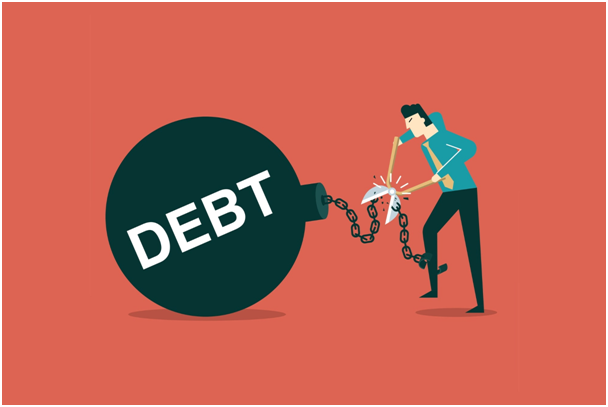You should know that a debt-to-income ratio (DTI) is a personal finance measure that will compare your overall income with the amount you owe. Remember that lending institutions will consider this measurement to determine whether you can repay the amount each month.
Lenders will check for low DTI or debt-to-income ratio because if you have high income and small debt, you can handle higher loads than before, which is an important consideration. At the same time, lenders are more likely to think you can take monthly expenses.
At the same time, you should know that credit utilization affects credit score, which is not the same thing as DTI. It is vital to create a budget, pay off everything you owe, and create a perfect strategy that will help you reduce the DTI ratio over time.
Things to Know About Debt-to-Income Ratio

You should know that a low DTI demonstrates that you have a perfect balance between income and debt. Generally, the lower the percentage, the higher the chances of getting the desired loan.
On the other hand, you should clear as much debt before applying for a new one. It is an indication that you do not have enough income to handle an additional monthly installment.
If you wish to calculate DTI, you should consider your overall monthly payments and divide them by your comprehensive monthly income. You can find numerous online options to help you determine the best course of action.
When it comes to debts, you should include only ones that feature nine or more months of payments within the calculations. At the same time, including expenses that do not relate to borrowed amounts are not relevant for DTI.
Tips for Lowering Your Debt-to-Income Ratio

1. Reduce the Interest in Some Debts
You can find ways to reduce overall interest for debts you currently have and pay. For instance, you can take advantage of repaying credit card debts and balances, which is essential for preventing high-interest loans from affecting your monthly income.
We recommend you refinance your current loan to reduce interest on unappealing loans, which will help you consolidate them into a single payment you will make each month. You can repay your credit card by getting a low-interest loan, which is an important consideration.
2. Increase Duration
It is essential to think about extending the duration of loans, ultimately reducing monthly payments and debt. Still, you will paya higher interest rate to compensate for more durable terms.
At the same time, you will leave yourself to be more vulnerable and carrying a heavy burden than before. You should enter this guide: forbrukslånpåtimen.com/, which will help you get familiar with various consumer loans you can get.
3. Side Income
One of the ways to reduce the debt-to-income ratio is by finding another stream of income that will help you ensure the results you wanted in the first place. At the same time, you are more likely to handle obligations, which is an essential factor to remember.
For instance, you can find a part-time job by renting your spare room, driving for Uber, or working in a restaurant. The market features a wide array of side hustles you can choose from, meaning you must decide.
4. Loan Forgiveness
When you have a private loan, the chances are low that anyone will forgive your debt. Of course, you can enter a relief program, but the process will ultimately affect your credit rating.
On the other hand, for federal loans, forgiveness is an option you can consider, especially if you have a student loan to take care of. The main idea is to check out different ways that will allow you to obtain forgiveness for federal student loans.
5. Pay Off High-Interest Debt
The first thing you should do is make a list of all payments you make each month. Then, you should check out which one is the highest. We recommend you pay it off first to reduce DTY and credit utilization ratio, which is essential for an excellent credit score.
You can also choose ways to reduce the amount by increasing the timeline, which is something mentioned above. The main goal is to determine which one to handle first based on high interest. It is way better to take care of the highest interest debts first than think about others.
6. Reduce Monthly Payment
You can ask to reduce the interest rate on the loan or reduce the amount you wish to repay at the end of your loan. Although this will offer you a higher interest rate in the long run, it will affect your DTI rating, a perfect strategy that will allow you to get more significant loans with better terms than before.
It would be best to compare the savings you would get by reducing DTI to expenses you must handle for another, higher loan before making up your mind.
7. Spend Wisely
We recommend you avoid adding debt to your existing credit card by taking advantage of non-essential spending. It is a perfect way to reduce DTI in the long run, meaning you should think everything through and avoid further spending altogether.
8. Debt Consolidation
One of the best loans you can use to handle the overall debt is a consolidation option that will provide you peace of mind. You can pay a few high-interest loans at once while getting the one with a single payment.
As soon as you enter here, you will learn more about various financial institutions that regulate lenders.
The savings you get means you will pay less on interest than past amounts. As a result, you will get the convenience of paying a single monthly installment with fixed interest rate instead of dealing with a few balances with different interest rates. That way, you can prevent potential issues from affecting your score.
Remember that consolidation will reduce your FICO credit score and report, but you can improve it by making timely payments. It is as simple as that.


